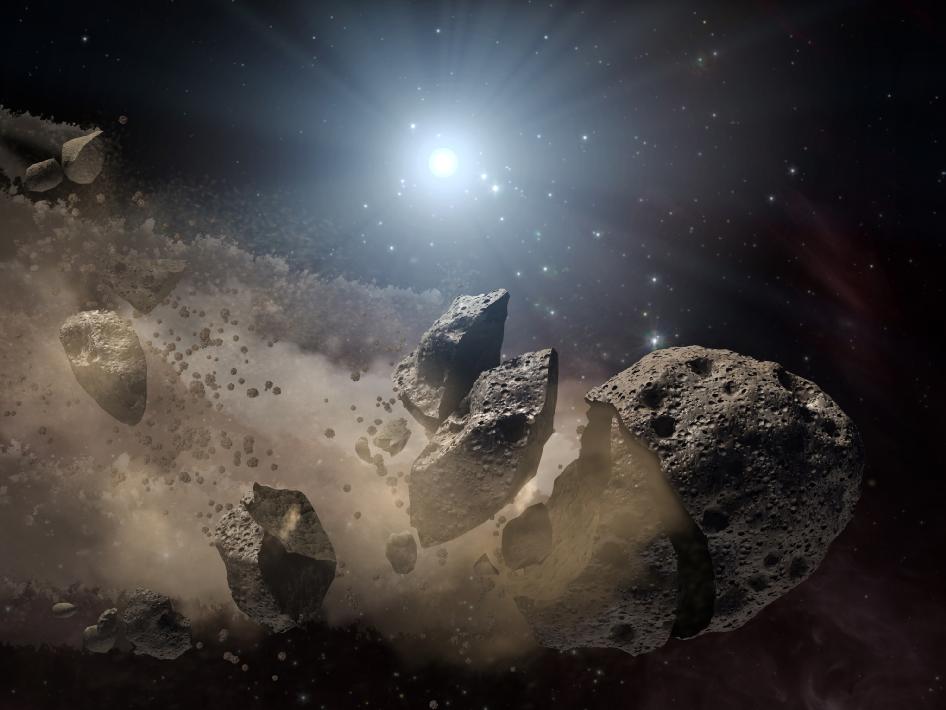Science News
Asteroid - Not Guilty
September 20, 2011

Telescopes look back in time. The more distant an object the telescope observes, the farther back in time it looks. Science Today has covered this phenomenon a few times, looking back at 13 billion year-old galaxies, billions of light years away.
But here’s a surprise! Yesterday, NASA reported details about an event that happened on Earth 65 million years ago—looking back in time at our own planet.
The event in question involves the mass extinction of plants and animals, also known as the K-T event—the point after which dinosaurs no longer roamed the Earth. The leading theory is that an asteroid slammed into the planet, drastically changing the climate and affecting life throughout the world.
In 2007, scientists using visible-light data from ground-based telescopes first suggested the remnant of a huge asteroid, known as Baptistina, as a possible suspect. According to that theory, Baptistina crashed into another asteroid in the main belt between Mars and Jupiter about 160 million years ago. The collision sent shattered pieces as big as mountains flying. One of those pieces was believed to have impacted Earth, causing the dinosaurs’ extinction.
But now scientists with the WISE mission, which mapped the entire sky in infrared light from January 2010 to February 2011, know that Baptistina probably can’t claim responsibility for killing off the dinos.
Visible light reflects off an asteroid. Without knowing the reflectivity of the asteroid’s surface, astronomers cannot accurately establish its size. Infrared observations allow a more accurate size estimate. They detect infrared light coming from the asteroid itself, related to the body’s temperature and size. Once its size is known, the object’s reflectivity can be re-calculated by combining infrared with visible-light data.
The NEOWISE team (NEO is for Near Earth Objects) measured the reflectivity and the size of about 120,000 asteroids, including 1,056 members of the Baptistina family. The scientists calculated the original parent Baptistina asteroid actually broke up closer to 80 million years ago, half as long as originally proposed.
“This doesn’t give the remnants from the collision very much time to move into a resonance spot, and get flung down to Earth 65 million years ago,” said Amy Mainzer, a study co-author and the principal investigator of NEOWISE at NASA’s Jet Propulsion Laboratory (JPL) in Pasadena. “This process is thought to normally take many tens of millions of years.” Resonances are areas in the main belt where gravity nudges from Jupiter and Saturn can act like a pinball machine to fling asteroids out of the main belt and into the region near Earth.
A very slow pinball machine, apparently.
So the asteroid family that produced the dinosaur-killing asteroid remains at large, for now. The team hopes to use NEOWISE data to disentangle other asteroid families that overlap and trace their histories.
“We are working on creating an asteroid family tree of sorts,” said Joseph Masiero of NASA/JPL. “We are starting to refine our picture of how the asteroids in the main belt smashed together and mixed up.”
Image: NASA/JPL-Caltech